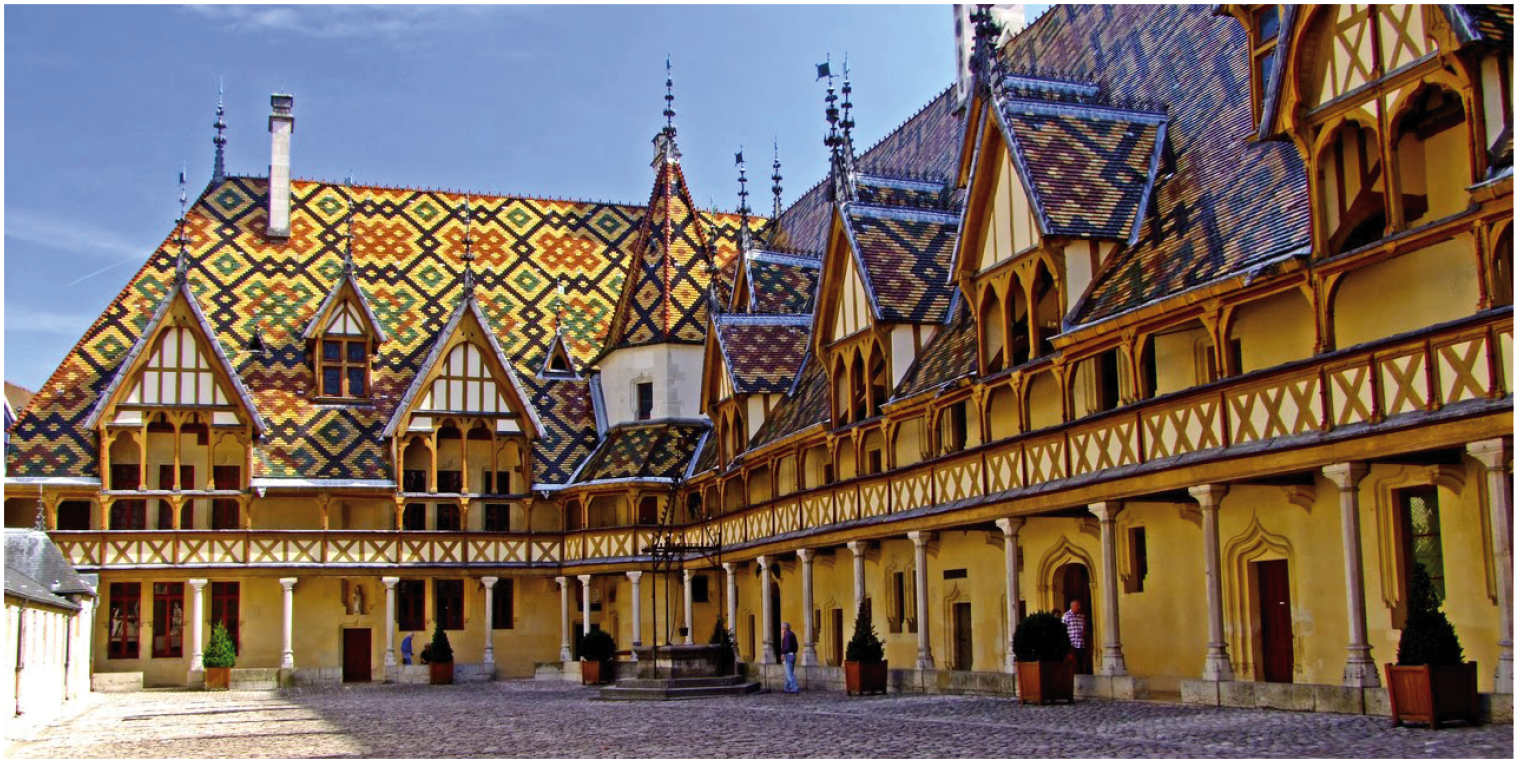Day 5: Oct. 19, 2018
Beaune: (46 km / 45 minutes) Dijon: (189 km / 2 hours) Troyes

Hospices de Beaune. The original hospital building, the Hôtel-Dieu, one of the finest examples of French fifteenth-century architecture, is now a museum.
When it comes to Dijon, the first impression is the lovely owl and the delicious mustard. Owls have been the lucky mascot of Dijon since ancient times. The local tourist bureau has also lined up scenic spots to form the “owl route.” Well-known world wide, Dijon mustard is a favorite sauce among chefs. Dijon, a prominent ducal territory in the 11th century, has developed into both an administrative city and art center famous for its delicious food and wine. We visit Rue de la Liberté, a busy shopping street for pedestrians. It is lined with buildings mostly dating from the 15th century to the 18th century which are classified as monuments historiques: Rue des Forges, from medieval times; Place François Rude where the locals love to promenade; and the most typical building, the Palace of the Dukes.
In the afternoon, we visit and take in Troyes with its very long history. Troyes has been well documented since the Roman times, and has many well-known titles, such as “the capital of history”, “the capital of medieval half-timbered houses,” and “the capital of stained glass,” as well as an important city for textile industry. We visit one of the most famous landmarks,Troyes city square to admire its medieval legacy, a lovely group of half-timbered houses, as well as the super-popular alley Rouelle de Chats. Next is Eglise Ste-Madeleine, built in the 15th century. It is a three-aisled church principally renowned for its magnificent fifteenth-century stained-glass windows, among the most accessible and dramatic windows in France.
